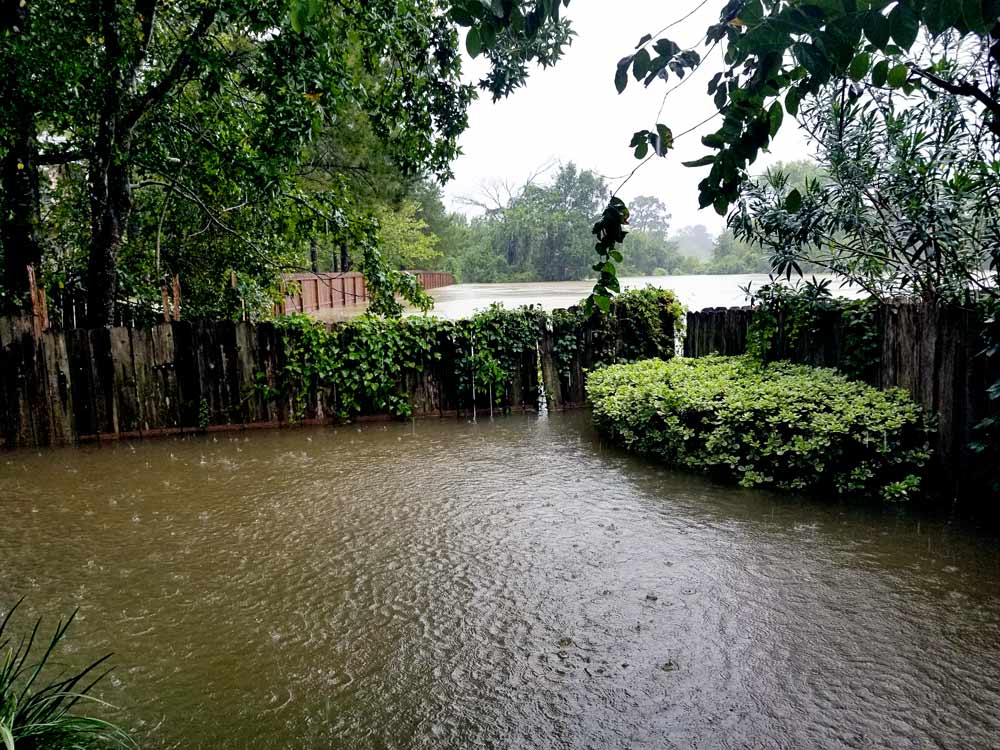I’ve Flooded Now What?!
First thing’s first when you are flooded – Get Safe!
Obviously, if you are in an emergency situation handle that first. Call 911 and keep calling. If you are in need of rescue hang a white t-shirt, towel, etc. very tightly to your front door [knob] – take it down when you get rescued. Then prepare yourself for the amount of time this will take. Your safety is an immediate need, the repairs and insurance will be a long process.
Check out our Houston Hurricane Information for more information and essential links for all things pertaining to a hurricane emergency (state & national emergency and non-emergency numbers, how/ where to donate items and your time, rescue and weather information, etc.).
Immediate Tips
- Insurance: Call your company ASAP. If your agent is local you may need to call your company’s headquarters. Follow their instructions about when to make repairs. Keep records of all conversations.
- Storage: Order a POD or storage container ASAP, they may sell out.
- Autos: If your car has flooded arrange for a rental ASAP you won’t be the only one.
- Home Safety: Make sure your home is safe to return to – check for visible structural damage and contact the utility departments if you suspect damage to water, gas, electric, and/or sewer lines.
- Document: Take pictures before you remove water, clean, or make repairs. ?If you can use a yard stick or measuring tape to establish the high water mark.
- Personal Safety: Wear waders (preferably hip or waist high), wear rubber gloves. Throw away any food that may have come into contact with flood waters (including canned food). Boil water until told differently by local authorities.
- Emotional Distress: Call the @disasterdistressline at 1-800-985-5990 or text TalkWithUs to 66746
Resources and Help
Clean Up
- Confirm & Begin: Confirm with your insurance company that you can begin the removal yourself.
- Remove Water: Use a sump pump or wet vac (if it is a small amount). Don’t hurt yourself water is heavy.
- Poke holes at floor level in the drywall to allow trapped water to escape.
- Remove Wet Items ASAP: Mold can develop with a day or two remove all wet items (including sheetrock, drywall, baseboards, carpet, and bedding) as soon as possible. Document, document, document.
- Spray surfaces by cleaning with a non-ammonia detergent or pine oil cleaner AND with a 10% bleach solution (Be careful with your cleaners and do not mix ammonia and bleach).
- Cut your sheetrock line about two feet up the wall (confer with your insurance company)- the straighter you cut it the easier the rebuild will be.
- Spray your studs with a 20-30% bleach solution as they dry out. Don’t scrub visible mold as it can release spores that will resettle in your walls.
- No need to worry about glued down hardwoods contractors can remove those later.
- If there is still a threat of further flooding don’t put debris where it can be washed into drains and cause stoppages and further flooding.
- Secure: Put up boards or tarps. Again document the steps you took to mitigate further damage. If your home is looted or burgled you will be able to make a claim but not if you have not attempted to secure your property.
- American Red Cross Catalog: “Repairing Your Flooded Home”
- FEMA “After the Flood”
Financial
- Qualify: To see if you qualify visit DisasterAssistance.gov
- Tax Relief: To find out if you qualify for tax relief given to survivors of disasters visit the IRS.
- Unemployment Assistance: Provides financial assistance to individuals whose employment or self-employment has been lost or interrupted as a direct result of a major disaster and who are not eligible for regular unemployment insurance benefits. Visit the Disaster Unemployment Assistance site.
- No Downpayment Mortgage: The Federal Housing Administration (FHA) Section 203(h) program offers features that make recovery from a disaster easier for homeowners by not requiring a down payment. There are, of course, requirements.
Insurance Tips
- Hotel Reimbursement: Flood insurance will not reimburse you for loss of use. Prepare for this expense to be out of pocket.
- Document More: As stated before: take pictures, a lot of them, and at every stage.
- Keep your receipts.
- Retain a piece of carpet and carpet pad for the insurance company to verify replacement value (save multiple samples if need be).
- Take pictures of every item you plan to claim.
- Adjustors: Be nice to them. Other than it’s the right thing to do they are in charge of how much you will get so it just makes sense.
- Patience: All flood claims go through FEMA, no matter who you have your policy with. Expect a time table to be on par for something being handled by the government.
- Remember, if you can file a claim you must before FEMA can provide money for losses.
Contractor Tips
- Drying Your House: Don’t let a contractor waste your claim money by “drying” out your house with fans etc. Once the walls are open the studs will dry in time. You would rather spend that money on nice carpet than renting industrial fans. Instead, use fans, your air conditioning, and a dehumidifier from the hardware store, run them constantly for at least two days.
- References: Ask for them and follow up. After a flood, you will be inundated with business cards.
- Subs: Almost all contractors use sub-contractors. Make sure your contractor has a relationship with his subs.
- Quotes: Get at least three. Don’t sign a blank contract (especially for removal).
- Patience: They will be busy. Be patient you want your work done right, not fast.
As the saying goes, this too shall pass. If you are offered help – accept. Be specific. This is a time when our city will show its stripes and generally, we are good at helping each other.
This is a list based on the collective advice of the Internet. We are not in the insurance, flood, or disaster business please do not mistake this list as legal or professional advice. It is simply a guide to get you to your chosen professional. Houstonians helping Houstonians. Good Luck!




